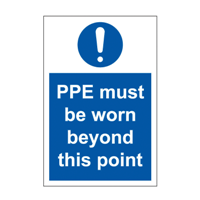PPE, an abbreviation which stands for personal protective equipment, can save your life, and it’s a legal requirement in some workplaces across the country. Although it’s widely beneficial, many people choose to ignore its benefits either out of personal choice or lack of knowledge – but what is PPE and why’s it so important?
What is PPE - 5 things you need to know

There are many types of personal protective equipment, but generally the term relates to specially made clothing, headwear, or eyewear that has been designed to protect the wearer’s hearing, head, eyes, feet, arms, body, or respiratory system. Typically, the equipment is worn by those who face an occupational hazard in the workplace, as well as during sports and other recreational activities.
In order to prevent accidental injury from occurring, wearing PPE is vital and should be a number one consideration at work. PPE regulations help to govern how workplaces and employees should use protective equipment, and states that it is the absolute minimum that workplaces should do to protect their employees. This means that using PPE should be part of a wider plan to improve health and safety in the workplace.
Here are 5 of the main things you need to know about PPE in order to make sure you’re protecting your employees.
1. Employer responsibility
The workplace is always responsible for providing, replacing, and paying for the equipment that employees will be using, and employees should not be asked for a contribution towards the financial cost of PPE. When selecting products, ensure that they are marked with the CE symbol – this shows that they are fit for purpose. They should also be comfortable for the user to wear, as this will encourage workers to use the items correctly.
2. Understanding the importance of PPE
Although PPE is an important part of any hazardous workplace, providing employees with the equipment fit for the job is not enough. A workplace should provide PPE as the very minimum protection against hazards in the workplace. The Health & Safety Executive believes that it is important that employees understand why they need PPE and are trained on how to use it correctly. Consider doing regular training days in order to refresh the company’s health and safety policy and emergency procedure. You could also keep a physical copy of the company procedure at all workstations so that it can easily be checked.
3. How to maintain PPE
Maintenance is vitally important to extend the life of PPE. PPE should be properly stored when it is not being used and kept in good condition. For example, dirty face masks should be wiped down or thrown away, and ear protectors and gloves should be stored in a dry and clean place. Crucially, employees must report any issues or faults as soon as they occur as, otherwise, the affected PPE will no longer offer the protection it should. Employers should make sure that the correct replacement parts are available, and that alternative equipment is to hand when it is needed.
4. Part of a safe system of work
Every workplace must be health and safety assessed through approved risk assessments, and safe systems of work should be put in place that helps to minimise the chance of risk in the workplace. After these steps have been taken, the remaining hazards should be appropriately addressed with PPE. PPE ranks last on the hierarchy of controls where workers are regularly exposed to a hazard and it’s not the first desired approach for the safety of workers. Protective equipment should be used as part of a safe system of work that all staff members use on a day to day basis.
5. The responsibility of the employee
It is the responsibility of employers to pay for and provide PPE to employees, but employees must also take responsibility for their own safety and the safety of others in the workplace. PPE must be worn in accordance with safety guidelines and should be returned to the correct place of storage after use. Maintenance to equipment should also not be undertaken before training and authorisation have been sought. Keeping these five tips about how to manage PPE in your workplace will mean you’re putting your employees’ safety at the top of your priority list, which is the most important thing. If you have any questions about specific PPE required for individual workplaces, contact us today.
Comments
Latest Blogs

An updated guide by consumer organization Which? looks at how to protect people’s ears. They focus on two main types of ear protection, earplugs and ear defenders.

A review submitted by the Department of Work and Pensions (DWP) has recommended that the Health and Safety Executive (HSE) should compel employers to improve their behaviour in issues of workplace health and safety.

Drivers are being urged to consider their footwear choices when behind the wheel, particularly during hot summer days when flip-flops are popular.

Leave a comment